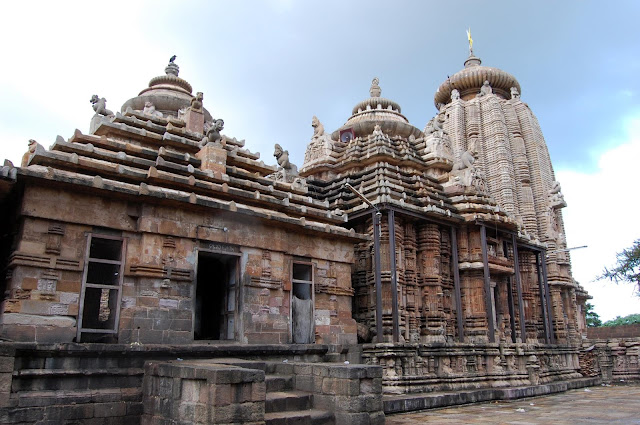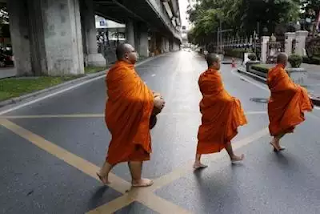B

India’s
greatest contribution to the world is Buddhism.
With
over 5,000 years of history encompassing the most wonderful ancient history in
the world, few countries boast as much as India for historical sites, peerless
treasures, and mystical intrigue.
Attractions in Kolkata,
Capital of West Bengal
India’s
capital until 1911, Kolkata comes lauded as the self proclaimed intellectual
capital of the country. Teeming with the relics of the colonial past, this once
showpiece capital of the British is one of the largest cities in India and
fiercely loved by its inhabitants. Those visiting the city are highly rewarded
thanks to the some of the fine attractions including Victoria Memorial, St.
Paul Cathedral Church and Indian Museum.
Victoria
Memorial
Your
lasting impression of Kolkata will be of the impressive the Victoria Memorial.
A perfect example of Indo-Sarsenic architecture, this iconic landmark of white
marble houses several galleries displaying Raj memorabilia as well as paintings
of the bygone era.
St
Paul’s Cathedral
A
fine specimen of Indo-Gothic architecture modelled after the Canterbury
Cathedral, St Paul’s Cathedral in Kolkata is billed as one of the most
important churches of India. Located east of the Victoria Memorial, the church
houses the best stained glass window in the country. Built in 1847, St Paul’s
Cathedral underwent redesigning and reconstruction after the damage to the
structure in 1897 earthquake.
Indian
Museum
Bharhut in the Indian Museum, Kolkata /
Image creditA
stay in the Indian museum in Kolkata will enhance your historical knowledge. An
impressive repository of artefacts dating back to the different periods of
history, the museum came into being in 1814 and is a must-visit attraction in
Kolkata. One of the highlights of the museum is a replica of the 2nd-century BC
Barhut Stupa.
St.
John’s Church
Built
in 1787 St. John’s Church is one of the oldest Churches in Kolkata. Its 174
ft-high stone tower has earned it the nickname ‘The Stone Church’. Within the
precincts of the Church is the tomb of Job charnock, traditionally associated
with the foundation of Kolkata. Another highlight of St. John’s Church is home
to 2 hundred year old exquisite painting depicting the Last Supper, by
18th-century German neoclassical artist Johann Zoffany.
Sarnath, Uttar Pradesh
Located
10km north of Varanasi, Sarnath is a Buddhist attraction not to be missed. It
was at Sarnath where the Buddha delivered his first sermon after the attainment
of enlightenment in Bodh Gaya from where he journeyed to Sarnath to preach his
first sermon to those five ascetics who were his disciples but had left him in
disgust when they found that the Buddha became convinced that rigorous self mortification
is not the way to obtain final bliss.
Dhamekh
Stupa and Ashokan Pillar are the main attractions in Sarnath.
In
Varanasi you can visit the Dasaswamedh Ghat, the most famous of the several
ghats on the banks of Ganges River in the city. It is fascinating to see the
aarti (prayer ceremony). An evening stroll through the local market will be a
unique experience.
You
can take a sunrise boat ride along bathing Ghats of the Ganges to have a
glimpse of temples and the age-old rituals performed by thousands of devotees
who throng here to take holy dip in the waters to cleanse themselves of the
sins.
The
city tour of Varanasi may include visit to the Sankat Mochan temple and the Bharat
Mata temple.
Bodh Gaya in Bihar
Bodh Gaya, is 250 km away from Varanasi, is in Bihar. It was at Bodh Gaya where the Buddha got Enlightenment under the bodhi tree (Tree of Wisdom).Mahabodhi temple is the main attraction in Bodh Gaya.
Mahabodhi temple
The spiritually important 170 feet UNESCO listed Mahabodhi Temple is one of the oldest shrines in India. Its art and architecture has been described in glowing terms by the 7th century Chinese traveller Huien Tsang. In all probability the main tower of the temple was built in the sixth century AD.
After visiting the Mahbodhi temple you can visit Sujata Village named after the young woman Sujata who offered milk to Siddhartha Gautama as the Buddha was known before he got Enlightenment. You can head towards the Niranjan River (modern Phalgu) on the banks of which one morning of Vaisakha Purnima at the age of 35, Siddhartha Gautama attained Enlightenment under the Bodhi tree (Tree of Wisdom) and came to be called the Buddha.
Nalanda, Bihar
85 kms away from Bodh Gaya is Nalanda which is known for the
ruins of the world famous Buddhist monastery which served as a great centre of
learning in the ancient India.
Established in 5th
century AD during the Gupta p eriod the University of Nalanda was the Buddhism’s
most famous teaching centre which attracted students and pilgrims from far-off
countries including China and south-East Asia. The renowned Chinese traveller
Hiuen-Tsang who visited India in the 7th century AD, studied at the
University describes Nalanda as full of intellectual activity.
Rajgir
After exploring Nalanda University Complex you can proceed to Rajgir which is 15 km from Nalanda. A major centre of Buddhist pilgrimage, Rajgir in Bihar is famous for being deeply associated with the life of the Buddha. It served as the ancient capital of the powerful Magadha Empire and was one of six main cities in ancient India. This can be gauged form Buddha’s disciple Ananda’s regret that his master should have died in either of the cities of Sravasti, Champa, Rajagraha, Saketa, Kausambi and Varanasi not in a small place like Kusinagar.
At Rajgir you can visit Griddhakuta or Vulture's Peak, Bimbisara's Jail, Venuvanaram and Saptaparni Cave.
Griddhakuta
The well-known Buddhist site of Griddhakuta Hill is deservedly an attraction in Rajgir not to be missed. During the rainy season the Buddha used to climb up to hismo untain retreat atop the Griddhakuta Hill and deliver sermons to his disciples. The brilliant shine of the Shanti Stupa (Peace Pagoda), built on the top of the hill by the Buddha Sangha of Japan in 1965, is a feast for the eyes. Though you can reach the hill by following a bridle path, it would be an experience of a lifetime to use the aerial single-person chairlift. A ride on the chairlift commands a panoramic view of the hills of Rajgir and some Jain temples dotting the landscape.
Bimbisara's Jail
The spot marks the site where King Bimbisara, the founder of Haryanka Dynasty of Magadha, was imprisoned by his son Ajatashatru who later murdered his father.
Venuvana
One of the famous attractions of Rajgir, Venuvana is the site of the monastery Venuvana Vihar where Gautama Buddha used to reside while he was in Rajgir.
Venuvana Vihar was built by Bimbisara for use by Buddha. Bimbisara was the founder of Haryanka Dynasty of Magadha.
Saptaparni Cave
Saptaparni Cave is the place where Buddha used to meditate. It is said to be the venue for the First Buddhist Council, held six months after Buddha's death. The
Saptparni cave is also the source of the various hot water springs the waters of which are known to provide cure for the chronic ailments. The therapeutic baths at these springs have been famous for their medicinal powers for centuries and have continued to have a following among the Buddhists, Hindus and Jains to this day.
Itkhori
Located some 150km from Ranchi, Itkhori in the Chatra district in Jharkhand is a holy site to Buddhism.
Legend has it that the Buddha had come to Itkhori. When his aunt reached Itkhori searching for the Buddha who had renounced the mundane world and was meditating here, she did not find him and left the place with heavy heart by saying Iti Khoi, which in Pali means "we lost him here". It was from these two words Iti Khoi that Itkhori derives its name.
Sanchi
stupa, Madhya Pradesh
The
Sanchi stupa is a massive hemisphere of about 120 feet in diameter. Towards the
end of the 1st century BC four glorious gateways (torana) were added at the four
cardinal points. The stupa was enlarged to twice its original size in the 2nd
century AD. Lesser stupas and monastic buildings surround the great stupa.
The
Sanchi gateways, carved with great skill, are more remarkable for their carved
ornamentation than their architecture. You will also find an Ashokan pillar,
located in the vicinity of the Southern gateway of the Great Stupa.
Ajanta
Caves, Maharashtra
The
world famous site of Ajanta is home to some 29 rock-hewn Buddhist caves which
were excavated into the scarp of a cliff of a hillside set in the valley of the
Waghora River. Of these four are Chaityas and the rest viharas
(monasteries). These caves were
constructed from the 2nd century BC to 7th century AD.
The
spectacular sculpture and lovely paintings with which the Ajanta caves adorned
make them one of the most splendid monuments of ancient India. The murals
depict scene from the life of the Buddha and from the Jatakas.
Among
the many works of genius of Ajanta, the statue of Avlokitsvara Padmapani in the
pose called tribhanga is something that defies imagination.
Ellora
Caves, Maharashtra
Ellora
Caves’s claim to world fame lies in the magnificent 34 rock-cut caves dating
from back to sometime between the 5th and 8th centuries AD. Out of the 34
caves, 12 are Buddhist. Of these the 11 caves are all viharas except the
Visvakarma which is a chaitya hall enshrining a stupa adorned with a massive
figure of Buddha in a seated position with two attendants on both sides.
The
crowning jewel of the Ellora is the Kailasanath Temple chiseled out from a
single rock and is an awesome achievement of the architects and artists. Its
carvings are among the finest sculptures of India.










.jpg)




